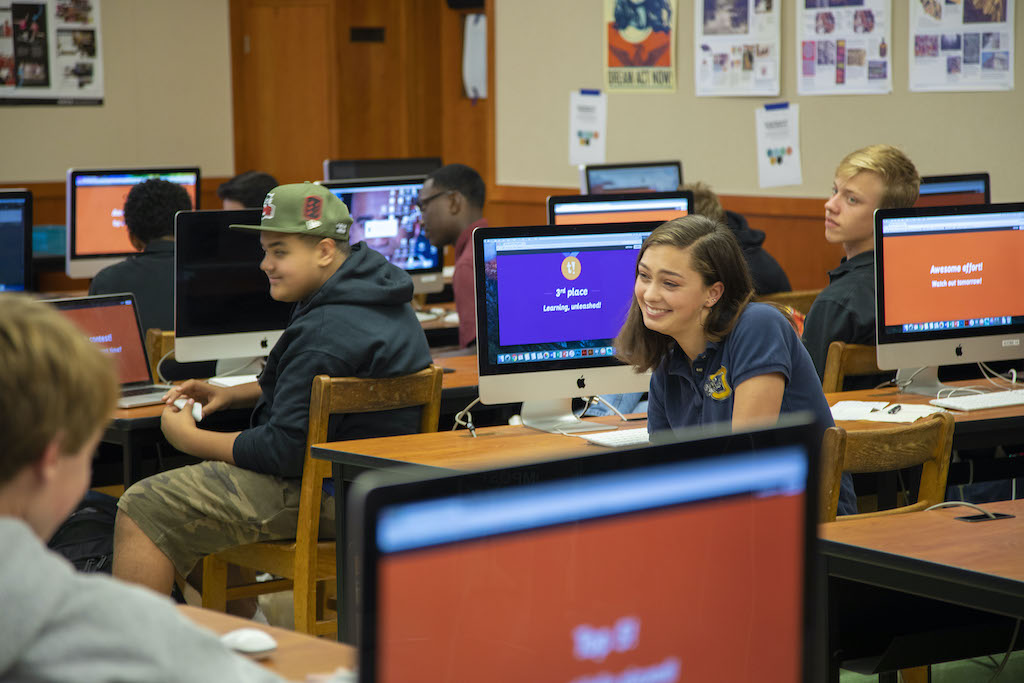Culturally relevant pedagogy is at the forefront of educational programs and professional developments. There is an awareness of the engagement crisis amongst students theoretically. However, the efforts to mitigate students lagging behind in achievement in practical ways is not equally emphasized. Ultimately, vulnerable populations suffer as a consequence of generic pitfalls in the educational processes.
Math and reading scores have plummeted post-pandemic in a way that has not been seen in decades. While culturally relevant pedagogy can make math and reading relatable to engage students, the level of attention is not sustained with the minimal amount of effort in relevance and the lack of consistency in the pedagogy. In the best case scenario, if educators put in the effort to make content relevant, lack of reinforcement of not just new skills, but past skills, puts students at a disadvantage. The lack of motivation smears in and invades the thoughts of the student to not continue. In a classroom where educators do not use technological scaffolding to their advantage, educators will not be able to monitor every student’s progress. The attention a student in 6th grade at a 2nd grade math level and another one at an 8th grade reading level calls for the need to differentiate. However, with one educator and overpopulated classrooms of 30-35 students, how can one educator address all of these nuances. It goes beyond culturally relevant pedagogy, and it even goes beyond differentiation. Rather, to keep the engagement, consistency, and motivation at a surge, it requires gamification and collaboration.
What can make content more relevant that the collaboration of students helping each other while they play with game design settings, hence the word gamification. Although nascent in the education system, programs like Kahoot, Gimkit, and Blooket are among student favorites when it comes to learning and reinforcing new material. Instead of emphasizing summative assessments through traditional paper tests at the end of a lesson or chapter, summative assessments allow for students to grow through the process of learning through a game. About 85-95% of teenagers aged 12-17 play video games. Time spent gaming during the pandemic soared 16.5%, with the global increase of time spent video gaming was 39%. Students are accustomed to seeing information presented in the form of a game. They engage in team work, camaraderie, and strategic choices when playing these games. This is why there is a gap in attention between the dopamine and endorphin filled game Fortnite or Free Fire compared to sitting in a desk having an educator assign an online lesson or a textbook to read. Instead of passive rote memorization, an active form of learning is reinforced and stimulated through gamification.
When it comes to measuring the success of gamification, different metrics such as teacher learning analytics, student user experience, and administrative market caps and net worth can be analyzed. Kahoot gives educators the option of hosting live sessions of questions, the time allotted per question and students the ability to choose their name and character. Teachers also release sets of questions pre-made for other teachers in particular subjects. Students enjoy the process of answering questions at the same time as everyone else while then seeing results in the leadership dashboard at the very end. Gamification, however, cannot be condenses to points, bages, and leaderboards. The reason why even Kahoot is now perceived as obsolete and students are generally preferring Gimkit and Blooket is due to the increase of student agency. Blooket allows students to choose the theme that the game will be based on, while Gimkit is more user friendly than Kahoot. Teachers with Blooket and Kahoot are able to view the number of questions students got correct and incorrect individually and compared to the class. Educators can also see the time it took for students to complete certain questions, revealing the most challenging ones within the student data. Educators having access to student strengths and weaknesses allows for formative assessments to be made and know what they can better focus on in review sessions or lessons. Statistically significant tests have been conducted and revealed 70% significantly raised students’ final grades or test scores. From a numerical standpoint, there has also been proven and research-based success, which also explains the 9 million teachers that choose to use Kahoot in their classroom lesson plans.
Learning styles also cater to gamification by engaging different senses throughout the game. Traditional classrooms where educators are the active agent and students are the passive intakers of mundane information does not engage creativity or agile learning. However, when a game is conducted with numerous steps, and requires the active attention of students throughout the process, agile learning is the direct consequence. The verbal, visual, and kinesthetics necessary with sports becomes translated into the math arena, motivating students to accelerate their skills.
Culturally relevant pedagogy will look differently given the emerging ways to reach a new generation with new internal processes and mechanisms. The education system has remained unchanged in the last century, yet every other area faces the rapid changes of technology and artificial intelligence. How will concepts remain engaging and effective in deliverance with the interests and intake processes being dynamic and not stagnant like the majority of the educational system? The key lies in gamification, especially with subjects students need to fulfill graduation requirements. Reinforcing concepts in a way that is familiar can assist in narrowing the achievement gap caused by educational inequity and furthered by the pandemic. Let the pandemic allow for the evidence revealed to be yet again another wake up call to America to eradicate its education system in a way that is engaging, entertaining, and entrepreneurial. With schools emphasizing entrepreneurship programs, their leadership and teaching skills should model what entrepreneurship looks like in the first place. Gamification is the first and most pivotal step in this process. Let’s watch everyone be an entrepreneur in action.
Gamification + Collaboration = Math Acceleration.
By: Yenesis Alvarez
Image by: Kahoot!


